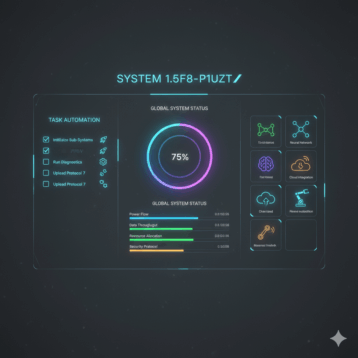|
Even though Chrome is a new venture for Google, the company has taken in the path of open source projects and taken components from other open source browsers such as Apple’s WebKit and Mozilla’s Firefox. In that spirit, Google would be making Chrome an open source code as well, and in the process be able to enhance their project even more by collaborating with the entire community.
In the comic strip, Chrome is said to be more stable, faster, and more secure. A team from Denmark has developed a JavaScript Virtual Machine called V8, which avoids java scripts and other snippets of code to control the browser and cause it to hang. Thus, Chrome will have multiple processes, where each tab will be allocated an individual process. If one tab gets corrupted, only that browser will crash and will not affect the whole browser. Another interesting feature is being able to tear off a tab and turn it into a separate window.
The browser also has an address bar that has auto-complete features called an “omnibox” (“omni” is a prefix meaning “all”, as in “omniscient” – “all-knowing”). This address bar is able to suggest recently visited pages, and popular pages on the web which the user might be interested in.
Taking from the Norwegian browser Opera, Google’s Chrome start-up page will present nine thumb-shot images of your most visited web pages. A panel at the side displays a few recent searches and bookmarked pages, as well as recently closed tabs. Chrome also is equipped to keep track of harmful sites, and provides warning of malware and phishing attacks. Google has said that Chrome continually downloads lists of harmful sites and assures that any site run in a tab is sandboxed, so that to not effect the machine and can be safely closed.
|
Chrome has a privacy mode, just as in Firefox, Flock, Safari, Opera and the latest version of Explorer. Google says that an “incognito” window can be created and no activity performed from that window will be logged on to the computer. The latest version of Internet Explorer calls this InPrivate.
Among all the web browsers available today, is there really a need for a new one? Regardless of what is needed, the public will always jump onto something new and exciting. Google has the best marketing ever. All it needs to do is to place “Download Google’s new browser here!” on it’s homepage and it will immediately lead to millions of downloads. Google has released the browser in 100 countries, and only time will tell whether the active community would choose Chrome over Firefox3, which people have been using for most of the year now. The challenges which face Google would be breaking the popularity of Firefox 3 and drawing in average users who use the Internet Explorer 7 that came with their Vista based computers.
Meanwhile, Internet Explorer 8 Beta 2, which some say has not improved on its bugs, will be fully released later this year. Firefox 3’s “Smart Address Bar” still beats Internet Explorer’s updated address bar, but Google’s “Omnibox” address bar’s promise of a more fluid response will have to be tested out before a verdict can be made.
Google has stated that Chrome is far from done, and that the Windows beta release is to start a discussion and to receive feedback on possible improvements and bugs. Versions for Mac and Linux would also be released soon as Google is still working on them.
|
TFOT took the Chrome for a little test drive. The installation procedure was fairly quick and it was ready to use in no time. The interface is clean and simple, which could be expected from Google. The homepage is simple and nice (showing thumbnails of your most visited web pages). Chrome seems to be at least as fast as Firefox 3 but uses far less memory – between 1/2 and 2/3 of Firefox 3 with very little CPU usage being reported. After digging a bit on the subject we found out that each tab (and actually each plug-in) is run on its own – which means that if a tab crashes from some reason all the other tabs will continue to function (the same goes for flash/java etc.). Most of the sites we tested played videos perfectly O.K. however a few still had some issues (Firefox also had issues with the same sites however). Stability seems fine although we did manage to crush the browser at least once. On the downside Chrome doesn’t seem to have the robust plug-in support Firefox (and to some extent Explorer) has. However if it will be able to draw enough users (and more importantly developers) it is possible that the plug-in situation will change making it even more comparative.
TFOT has previously written about the launch of Firefox 3, which includes more than 15,000 updates compared to its previous version, as well as major restructuring to provide improved performance and stability, delivering accuracy, code simplification, and sustainability to users as well as Aurora, Mozilla’s future browser. Aurora is a new concept browser with advanced user-interface. You can also check out our article about being Cool on ”Knol,” where Google recently has launched a new service which allows users to contribute their knowledge in a wiki-like format.
Additional information on Chrome can be obtained at Google’s website. You can download Chrome and test it for yourselves from here.













